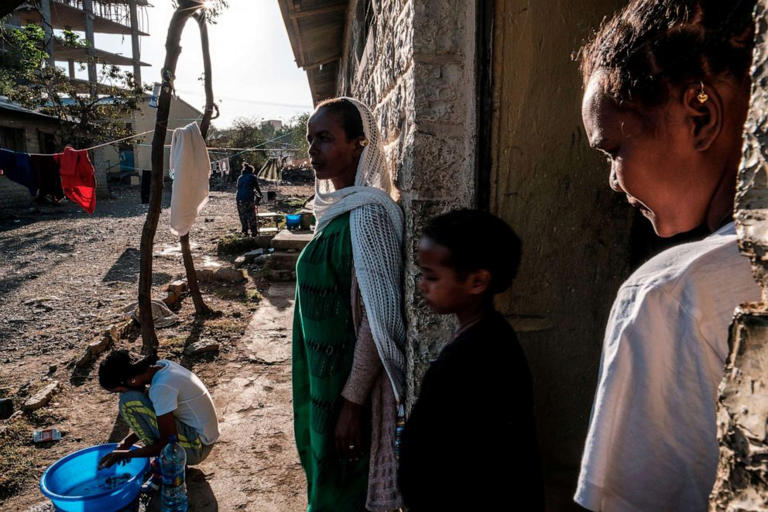14-Year-Old Wins National Spelling Bee With 'Psammophile'
https://en.wikipedia.org/wiki/Psammophile
A psammophile is a plant or animal that prefers or thrives in sandy areas. Plant psammophiles are also known as psammophytes.
After three years of studying, it took Dev Shah about 45 seconds to reach the apotheosis of his craft and become the national champion on Thursday night.
Video TRANSCRIPT
0:00/1:47
Dev Shah Becomes 2023 Spelling Bee Champion
The eighth grader from Florida won the Scripps National Spelling Bee — and $50,000. The winning word was “psammophile,” an organism that prefers or thrives in sandy areas.
“If you spell this next word correctly, we will declare you the 2023 National Spelling Bee champion: psammophile.” “Psammo, meaning ‘sand,’ Greek? Oh.” “Wait a second.” [chuckle] “Psammo, meaning ‘sand,’ Greek?” “Yes.” “Phile, meaning ‘lover,’ Greek?” “You’re on the right track.” “Can I please have all the information?” “Psammophile is a noun from Greek. A psammophile is an organism that prefers or thrives in sandy soils or areas.” “Psammophile. May I please have the sentence?” “Any psammophile, for example, a cactus, would flourish in the Arizona desert. Can you say it for us?” “Psammophile. Psammophiles.” “Psammophile.” “P- S- A- M- M- O- P-H- I-L-E, psammophile.” “That is correct.” [crowd cheering] “The hug from Charlotte and Morgan Fitzgerald Middle School celebrates in Largo, Florida. He had family watching in New Jersey and in India. His friends from back home celebrating, his father, Deval; his mother, Nilam; and little brother Neil. They’ll be talking about this for the rest of Dev’s life. Your 2023 Scripps National Spelling Bee champion.
The eighth grader from Florida won the Scripps National Spelling Bee — and $50,000. The winning word was “psammophile,” an organism that prefers or thrives in sandy areas.CreditCredit...Shuran Huang for The New York Times
By Remy Tumin, Maria Cramer and Maggie Astor
June 2, 2023
After 14 rounds of words like “probouleutic” and “zwitterion” and “schistorrhachis,” Dev Shah, an eighth grader from Florida, had to wait through one more commercial break. If he spelled the next word correctly, he would win the Scripps National Spelling Bee.
“Psammophile,” a plant or animal that prefers or thrives in sandy areas, would determine his fate.
He asked for all the word’s information — its definition, part of speech, orthography, use in a sentence — but he didn’t need it, evidenced by a slight smile as he spoke. After three years of studying, it took him about 45 seconds to reach the apotheosis of his craft and become the champion on Thursday night.
“It’s surreal,” he said as he held the coveted Scripps cup, the official championship trophy. “My legs are still shaking.”
Dev, 14, outlasted 228 other competitors, including 10 finalists on Thursday night, to win $50,000 in cash and a commemorative medal. Charlotte Walsh, an eighth grader from Virginia who finished in second place, will receive $25,000.
The moment was a culmination for Dev, who began competing in spelling bees in third grade and has studied 10 hours each day for the past year, according to his mother. When his parents rushed the stage to hug him, he felt overwhelmed, Dev said in an interview after the competition.
“It gave me the reassurance that I should never give up, no matter what,” he said Thursday night.
A fan of Roger Federer and the movie “La La Land,” Dev had competed in previous national spelling bees, tying for 76th place in 2021 and 51st place in 2019. In 2022, he did not make it out of the regional competition in his home state. The lone Floridian in the finals, Dev, from Largo, outside St. Petersburg, gave the state its first winner since 1999.
Because he is in eighth grade, this was his last year to compete, and he bested beasts of the dictionary like “chiromancy,” “schistorrhachis” and “aegagrus.”
The competition has become more difficult in the last two years, as its organizers have added new rules to challenge the spellers and to avoid a repeat of 2019, which ended with an eight-way tie after four hours that exhausted the bee’s list of challenging words.
In 2021, organizers introduced a vocabulary round, in which spellers have to identify the correct meaning of the word. Last year, they introduced the spell-off, an intense showdown in which the remaining spellers have 90 seconds to spell as many words correctly as possible. Harini Logan, an eighth grader from San Antonio, won by correctly spelling 21 words.
The 2023 finals began with 11 spellers, the youngest of them Sarah Fernandes, an 11-year-old from Omaha. More than half were eighth graders and seasoned competitors by the bee’s standards, representing a vast swath of the United States.
Despite their experience, there were some expected stumbles.
The schwa — the “uh”-like sound that can be represented by any vowel in the English alphabet, also known as the bane of competitive spellers’ existence — knocked out several finalists, as it routinely does.
In the 12th round, the insidious schwa claimed two victims: Vikrant Chintanaboina (“pataca,” which he misspelled as “petaca”) and Aryan Khedkar (“pharetrone,” which he misspelled as “pharotrone”).
The final three spellers were Charlotte, who last year tied for 32nd place, and Surya Kapu, a 14-year-old eighth grader from Salt Lake City, who finished in a tie for fifth place in 2022.
Surya fell to “kelep,” the word for a Central American stinging ant, denying Utah its first national title and leaving Charlotte and Dev in the final high-stakes duel.
He went first, correctly spelling “bathypitotmeter,” an instrument that measures the velocity and temperature of water at certain depths.
Charlotte got the word “daviely,” which means listlessly.
“Oh my god,” she said as she struggled, misspelling it D-A-E-V-I-L-I-C-K. Mary Brooks, the main judge, rang the bell, giving Dev his chance to avoid the spell-off.
When Jacques A. Bailly, the bee’s pronouncer, presented psammophile, Dev said he immediately recognized the two roots, despite having never heard it before.
Deval Shah, Dev’s father, said once his son “got on a roll, he would be unbeatable,” adding that the words would unfold like “a slow flow, as if a symphony is going.”
Mr. Shah first noticed Dev’s “remarkable memory” when he was 3 years old and became fascinated with a geography program on an iPad. His parents eventually channeled that curiosity into spelling, with Mr. Shah as his first coach.
Scott Remer, his current coach, said it was clear that Dev felt strong about his ability to spell the word Dr. Bailly threw at him.
“He has a capacious memory, a real love of language and he was resilient,” he said. “I couldn’t be prouder.”
On Friday, Charlotte, the runner-up, described how nervous she was before the finals.
“I felt like I didn’t really deserve to be there,” she said. “But getting second helped me prove to myself that I did deserve it, and that I should trust in my own skill.”
With his two biggest stressors — middle school and the spelling bee — behind him, Dev was looking forward to going home next week and doing “normal stuff” with his friends. For now, he was still letting the drop of confetti sink in.
“At the end of the day, it's your word that matters,” he said. “It’s not like a soccer team. If the other team is better than your team, it affects how the game goes. With spelling, it only matters what word you get and if you can last long enough.”
The New York Times













